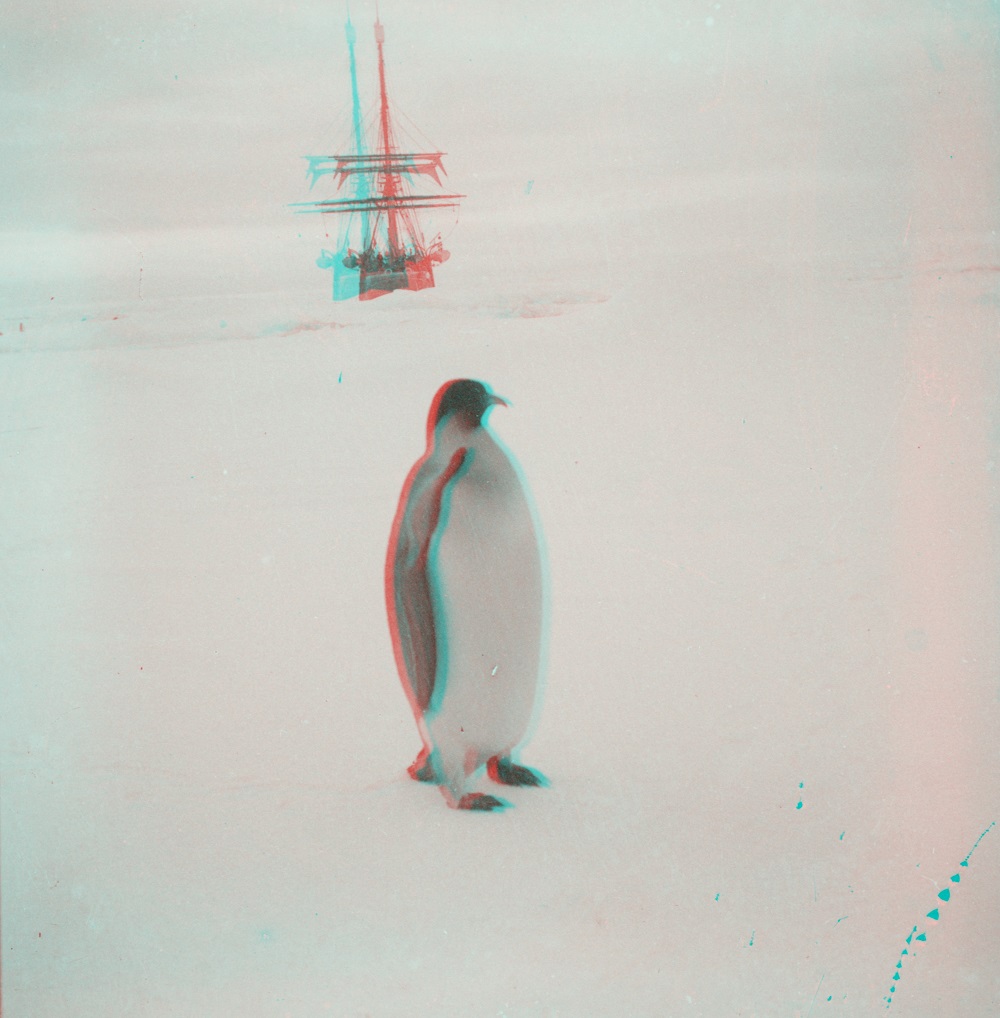
A stereoscope of a penguin and the Belgica
Hurleyville, NY – At the end of the 19th century, Antarctica was the last uncharted place on earth. But that was about to change.
On August 16, 1897, the Belgica ship set sail from Antwerp under the command of Belgian naval officer Adrien de Gerlache. Nineteen young men from six different nations were to chart a new path into the frozen unknown on a 3-mast wooden ship, accompanied by Sullivan County native Frederick Cook. Returning on November 5, 1899, the Belgica brought back a wealth of scientific data and one of the greatest victories of the human mind and spirit over the dominion and powers of nature.
Celebrating the 125th anniversary of the Belgian Antarctic Expedition, the Frederick Cook Society presents an exhibition of panels depicting drawings and photographs – including “three-dimensional” stereoptical prints – from the Romanian scientist Emil Racovitza (1868-1947). Racovitza was one of the scientists selected to be part of Belgica’s international crew. He was also a talented artist who produced numerous sketches and photographs during the expedition. Later in his career as a speleologist, Racovitza established in Romania the first Speological Institute in the world, and explored over 1,400 caves in France, Spain, Algeria, Italy, and Slovenia. He served for four years as President of the Romanian Academy and went on to become one of Romania’s most beloved promoters of the natural sciences.
The Racovitza collection is on generous loan from the Stephan cel Mare Museum in Vaslui, Romania.
The exhibition will additionally include one of the largest exhibitions of photographs from the Belgica expedition ever assembled. Five of the 19 crew members had cameras, including Dr. Cook.
Also on display will be one of the Belgica's rare remaining artefacts – a sled, designed and built by Frederick Cook and his brother Theodore at their Hortonville home. This extraordinary piece of history has the distinction of being used by both Cook and South Pole conqueror Roald Amundsen. Amundsen was 1st Mate on the Belgica and became Cook’s lifelong friend during the expedition. The two men are often jointly credited with saving the ship, which became the first voyage ever to survive an Antarctic winter.
For their contributions to the exhibit, the Cook Society gratefully acknowledges the Romanian Academy Library, the Racovitza Foundation, the Amundsen House in Norway, the MAS Museum in Antwerp, Patrick De Deckker, Professor Emeritus of the Australian National University, and Laura Kissel, Polar Curator of the Byrd Polar and Climate Research Center at the Ohio State University.
All are welcome Friday, June 21, from 4-6 p.m. for a reception, followed by a panel discussion at 6 p.m. entitled “Legacies of the Belgica: 125 Years of Polar Science and Exploration”. Panelists include Dr. Oana Marcu, co-founder of the Racovitza Foundation (racovitza-foundation.org/en/), and Dr. Sarah Pickman, an independent historian of exploration, whose work focuses on equipment for expeditions in the nineteenth and early twentieth century. Dr. Pickman is a graduate of Yale University’s History of Science and Medicine Program.
The Sullivan County Museum is located at 265 Main Street, Hurleyville. For more information, call 845-434-8044, or visit the Cook Society website at www.frederickcookpolar.org.

